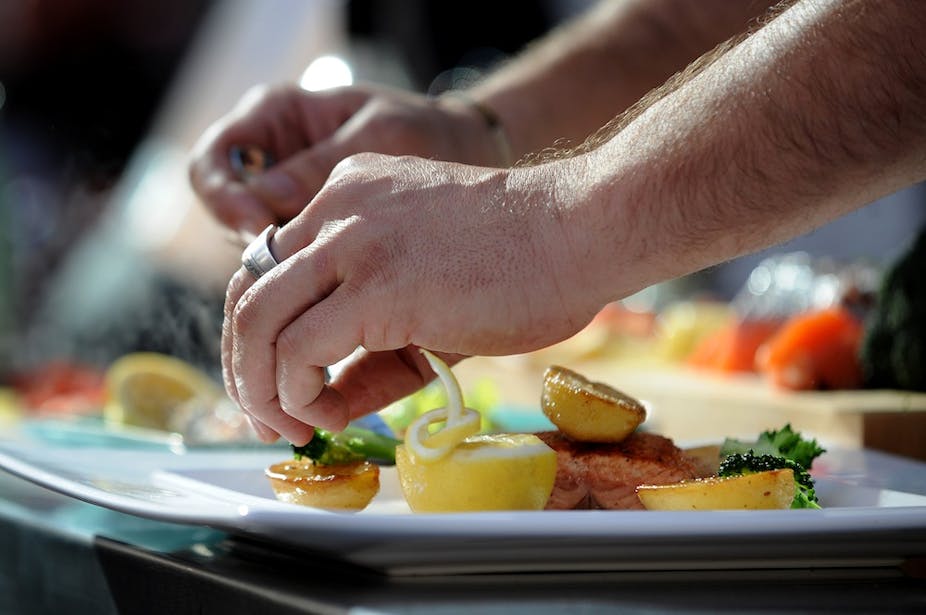In contrast to the gloom enveloping manufacturing and the slowing growth in commodities, tourism is expected to be a bright spot for Australia’s economy this year.
In his final public address, Tourism Australia chief, Andrew McEvoy ended his four year term by predicting the lower dollar, combined with an intensive (if long overdue) marketing campaign to promote Australian food and wine, can boost international tourism to Australia during 2014 and beyond.
Under McEvoy’s leadership, Tourism Australia positioned Australia as one of the world’s leading aspirational destinations. Surveys conducted by leading travel global magazine Conde Nast, have consistently ranked Australia as one of the top three most desirable destinations since 2010. This year, the conditions now exist to convert aspirations into reservations - or more prosaically, bums on seats and backs on beds.
Despite the strength of the Australian dollar throughout most of 2013, the country experienced steady but modest growth of international tourism arrivals. Australia welcomed 6.36 million tourists in the 12 months ending September 2013, an increase of 5.2% from the previous period.
Much of this growth came from China - a market which grew by 20% in 2013. China is numerically Australia’s second largest source market, and financially its most lucrative. Growing demand from Asia’s burgeoning middle class has been the mainstay of inbound growth.
However, a sharp 9% drop in Chinese tourist arrivals to Australia in November 2013 (compared to Nov 2012) was a wake up call to Australia’s tourism industry. Endless growth in arrivals from China can’t be taken for granted. The sudden dip in arrivals may be one-off, short-term response to Beijing’s new China Tourism Law. The law restricts activities of Chinese-based shopping tour operators who offer popular low budget “shopping tours” (which push tour groups to shop at selected “contracted outlets”) to many destinations (including Australia). Alternatively, it may spark a longer-term trend. The key message for Tourism Australia is to enhance the diversify of its international marketing.
While Australia’s traditional source markets of Europe, New Zealand and North America have languished, there has been positive growth from south east Asian countries, notably Singapore, Philippines and Vietnam (with visitors from the last two largely made up of people visiting friends and relatives).
However, this growth has lagged at the lower end of growth forecasts set out in Tourism Australia’s 2020 strategic plan.
Tourism Australia hopes to significantly bolster this with a marketing campaign designed to counter the widespread perception of Australia as an expensive destination by focusing on the desirability of its food and wine.
When tourists arrive here, they like to spend: Australia ranks 42nd in the world in terms of the number of international visitors, but first in terms of per capita spend and eighth in terms of tourism expenditure.
Research commissioned by Tourism Australia showed that after safety and value for money, good food and wine was a strong motivating factor for tourists to visit a destination.
Yet Tourism Australia’s research also shows Australia has a perception problem, with Aussie cuisine viewed as all about meat pies, barbies and beer. Among intending international visitors to Australia only 26% considered food and wine as a major attraction.
However, this changed dramatically among outgoing visitors.Food and wine ranked as the top feature of their visit for 60% of international visitors. In fact the global rating of Australian food and wine among international travellers was only exceeded by France.
In a move that acknowledged the outstanding quality of Australian food and wine has been under-promoted for many years, TA launched Restaurant Australia late last year, as a key element of its broader “Nothing Like Australia” marketing campaign.
While Tourism Australia has concentrated on promoting hospitality, safety, scenic beauty, unique experiences flora and fauna, the Restaurant Australia campaign finally acknowledges the outstanding quality of Australian food and wine has been under-promoted for many years.
The Restaurant Australia campaign will focus on the fresh ingredients, excellent seafood and the culinary and ethnic diversity of Australian food and wine available in Australia’s major cities and throughout rural and regional Australia.
This will be a relief to those state and regional tourism authorities which have been promoting their food and wine for years, including the Barossa Valley in South Australia, the Hunter Valley and Carbonne district in NSW, Margaret River in Western Australia, Tourism South Australia, Tourism Tasmania and Tourism Victoria.
While the slide in the dollar is bad news for Australians travelling internationally, it is excellent for the inbound and domestic tourism industry as more people are expected to holiday at home.
During 2014, a lower dollar, coupled with a marketing campaign emphasising Australia’s key tourism assets, is expected to reduce the gap between the 8.5 million Australians who travelled internationally in 2013 and the 6.4 million international arrivals. Tourism Australia, the State Tourism Boards and their respective private sector partners are engaged in an intensive twin track campaign to entice Australians to holiday at home and to attract international visitation.
The Restaurant Australia campaign is expected to provide a much needed boost, enticing tourists to sample advanced Australian fare.

